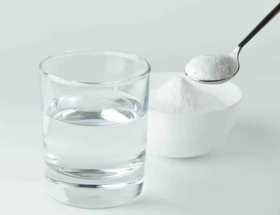Many women have excess breast milk in their breasts and it ends up being necessary to remove it. As many doctors say, you will need to drain your breasts.
Therefore, it becomes necessary to withdraw breast milk to give to the baby or simply to store it. We decided to bring you about Breast Milk, how to remove and store it.
It can be removed in different ways, from manual milking to gently compressing the breast. Being from top to bottom and stored the milk in a clean container. But remember to clean your hands and breasts very well before starting the withdrawal processes. Check out!
Breast pump, what is it?
We can say that a breast pump is a device that can pump, as the word says, this way it will make the milk come out of the mother's breasts.
When the child is not breastfed, the mother can take the opportunity to collect, store and offer it to the baby later. If your baby needs to stay in the hospital after birth because he was born too soon or is sick.
Or if the mother cannot be with the baby all the time, because of work, travel or other reasons.
Know the different types of breast pumps
Electric Pumps – They are used in hospitals as these breast pumps are powerful and collect breast milk faster. Much more used by women whose babies have to stay in the hospital after birth. It can also be rented to express milk at home.
Hand pumps – Best suited for women who only need to remove the bed from time to time. Because they remove breast milk more slowly than electric ones.

Homemade electric pumps – They are smaller than hospital pumps and can quickly collect breast milk, but generally not as fast as hospital pumps. Personal pumps can come in a carrying case, making it easy to pick up on the job.
How does each pump work?
It is important to say that each breast pump has its own printed guidance, but for all breast pumps it is important, follow the guidelines.
- Wash hands with soap and water before pumping.
- You don't have to wash your breasts or nipples.
- Make sure pump parts and breastmilk storage containers are clean.
- Make sure the cone-shaped pieces that fit over your breasts are the right size. Your nipples should not rub against the tunnel part of these pieces.
- Before a breast pump can collect breast milk, it must check that milk is flowing from the nipple. Usually this happens, but if it doesn't, you can try the following:
- Massage your breasts gently before using the pump.
- Put a warm, damp cloth on your breasts before using the pump.
- Do this in a secluded, quiet room.
5 myths and truths about breast milk donation
How long can I store breast milk?
Very important to know that you can store pumped breast milk in different places and for different amounts of time.
Breast milk can be stored in:
- Room temperature for up to 4 hours
- In the fridge for up to 3 days
- In the freezer for up to 3 months
You can store breast milk in clean glass or plastic bottles, it can be helpful to store breast milk in small amounts. To have a control, write down the date the milk was pumped in the container. Thus, in this way you will be able to give the oldest one first, and you will have control of the validities.
Be sure to heat breast milk (frozen or chilled) slowly. Do not thaw or heat breast milk by putting it in the microwave. Instead, fill a pot or container with warm water and place the bottle in it. Test the temperature of the milk before giving it to your baby. Milk should be warm or at room temperature.







